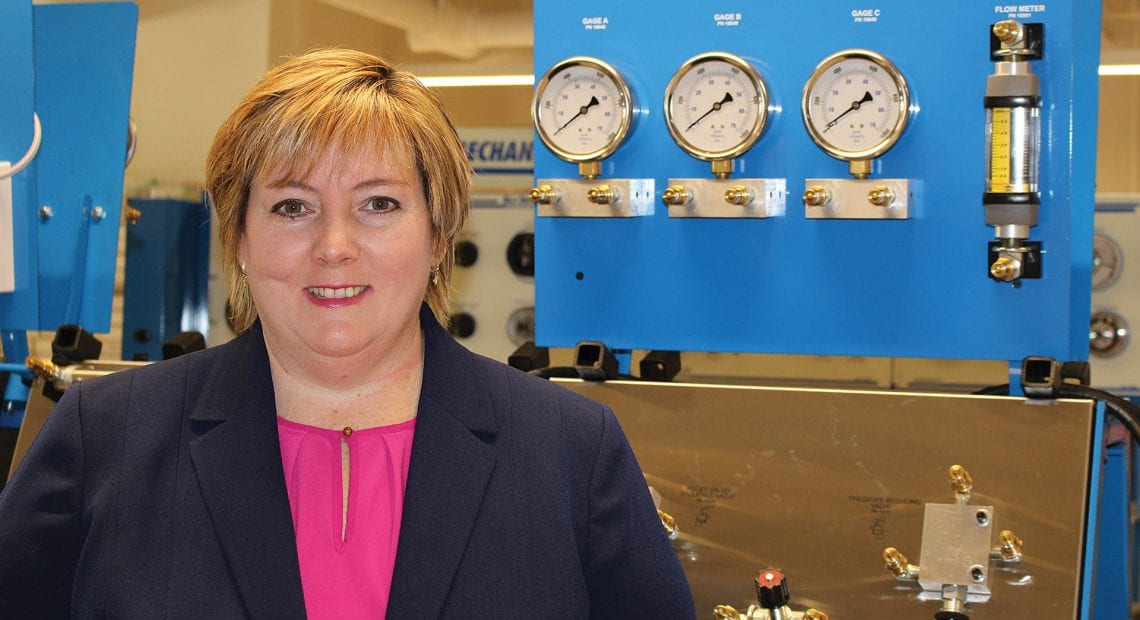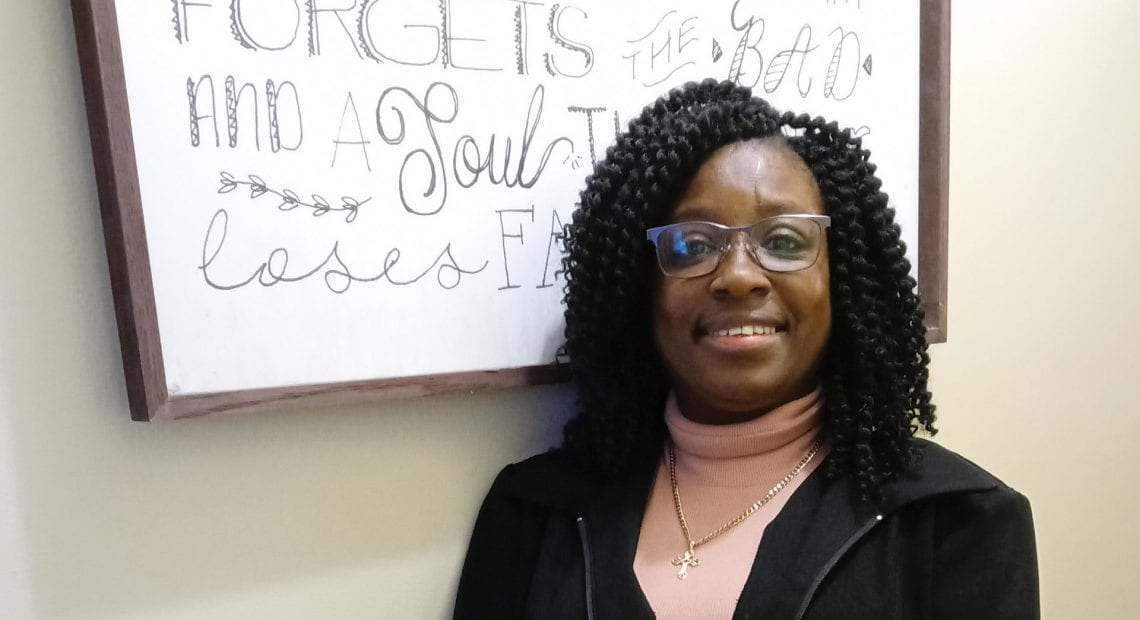Machine Learning
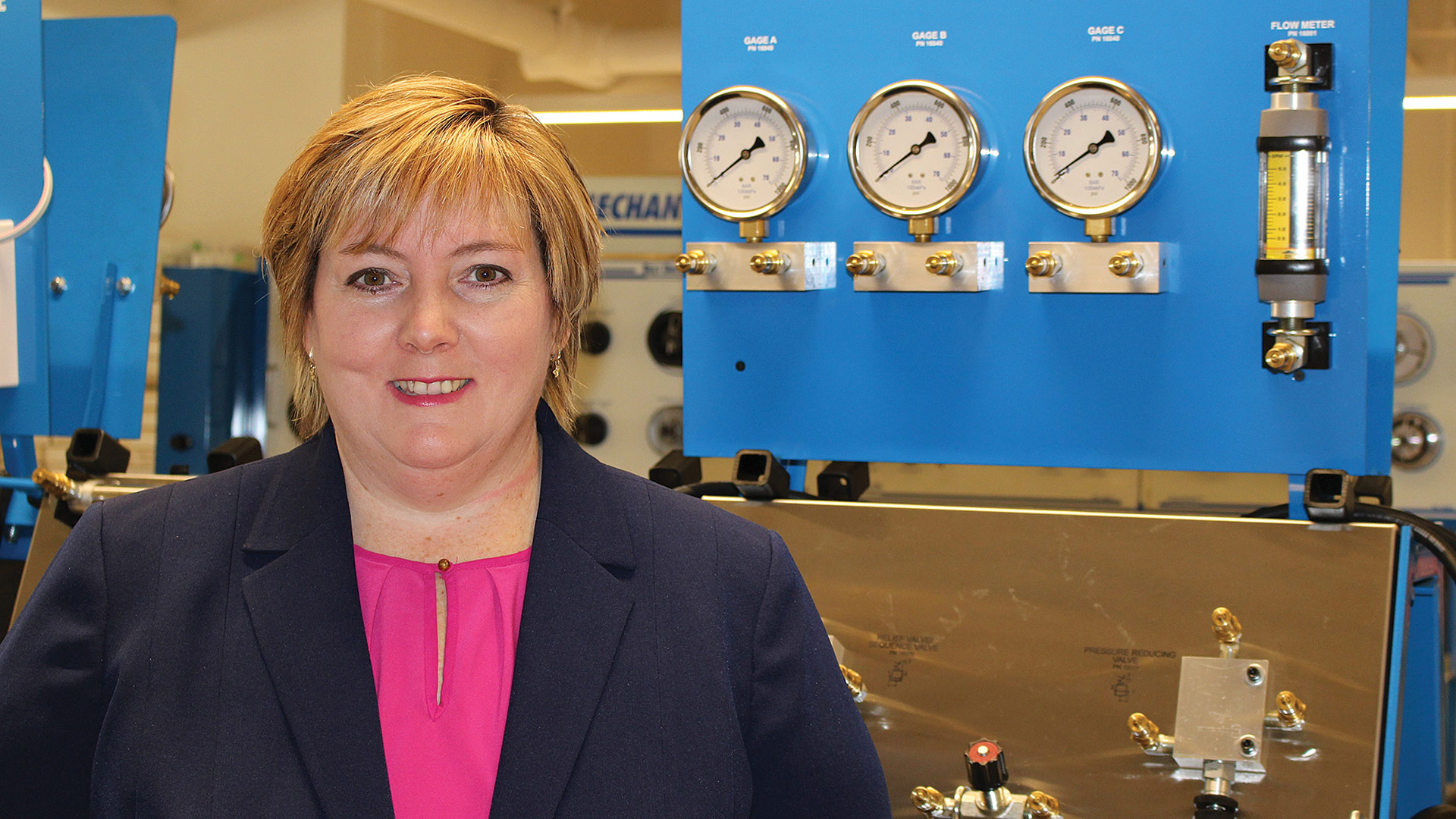
Mary Bidwell says hands-on training will always be critical, but the pandemic taught ACC about what can be accomplished remotely as well.
As pivots go, this one was pretty smooth, Mary Bidwell says.
But that’s fitting for an academic program built on precision.
It was almost a year ago — March 13, to be exact — when Asnuntuck Community College (ACC) sent everyone home, including students in its Advanced Manufacturing Technology program, which Bidwell serves as interim dean.
“We finished online through April and the end of May, and by the beginning of June, we were able to open back up,” she said, adding that students were able to finish their hands-on training in fields like welding and mechatronics on campus through the summer. “We were one of the first departments back on the ground.”
In the meantime, the program reinvented itself in some ways, turning to online content in ways professors and administrators hadn’t considered before, not only in classwork for the student body, but in community-focused courses for area workers seeking to boost their skills.
“We’ve pivoted well and created online content, we created hybrid models, we got students back in, and we’ve got good safety protocols in play — and we’re looking forward to getting even more students on the ground,” she told BusinessWest. “And now we have this whole portfolio of online opportunities we didn’t have before, and we’ve diversified what we can offer the community, which is great.”
Innovation and adaptation are not foreign concepts in the field of advanced manufacturing, or at ACC, which has become a robust collegiate pipeline into the manufacturing workforce.
The Advanced Manufacturing Technology Center at ACC has been around for almost a quarter-century, but it received a major overhaul four years ago with the opening of a 27,000-square-foot addition, more than doubling its space to about 50,000 square feet. It includes an 11,000-square-foot machining lab with 90 computerized numeric control (CNC) and manual machines, an additive-manufacturing lab equipped for both plastic and metal 3D printing, a metrology lab featuring computerized measuring machines, state-of-the-art computer labs — and a whole lot more.
But the center’s most impressive offering may be its partnerships with area manufacturers, who have guided ACC in crafting its certificate program as a way to get skilled workers in their doors quickly — typically at salaries starting around $50,000 or higher.
The program has created work opportunities for both young people and career changers, and addressed what has been a persistent lack of qualified employees these companies need to grow. Normally, advanced manufacturers are looking for people with three to five years of experience. But ACC students are interning during their second semester and being hired for jobs immediately after, at good salaries. The reason is that the curriculum is customized according to industry needs.
Companies can then build on that training, hiring certificate holders, further training them up, and often providing additional education opportunities along with that full-time paycheck.
“People are always thinking about four-year degrees, but if your pathway is through community college, your debt can be so much less,” Bidwell said. “That’s such an opportunity: to start a career and have someone else pay for it.”
Even though the pandemic has temporarily slowed demand for workers at some companies, Bidwell and her team — and the industry in general — believe that’s not likely to continue, especially with an aging workforce in many corners.
“You still hear about the silver tsunami,” she said. “We need to have people ready when they’re needed.”
Working Through It
The pandemic has slowed the pace of business in industries like aerospace and at regional anchor companies like Sikorsky Aircraft, mainly due to supply-chain issues dating back to last spring, but students in all three of ACC’s advanced-manufacturing areas — welding, machining, and robotics/mechatronics — are finding jobs, Bidwell said.
“It seems like the staffing agencies have been a source lately that, at times in the past, we didn’t use as much because of our direct contacts,” she said. “But students are getting placed; they’re still going into companies we’ve always worked with.”
Enrollment in the program is about 60% what it usually is, she added. “We did lose students because people just don’t want to go online at all — they want to get back on the ground. Hopefully we’ll see that return for the fall and definitely next spring as vaccines roll out further.”
The numbers aren’t really a problem, though, because of capacity and social-distancing rules on campus. Students have engaged in a hybrid model this year, with some remote instruction and the necessary hands-on training on campus. As expanded vaccination hopefully leads to herd immunity, Bidwell is confident that those limits can be lifted next year, but the college will plan for all contingencies, including more hybrid learning.
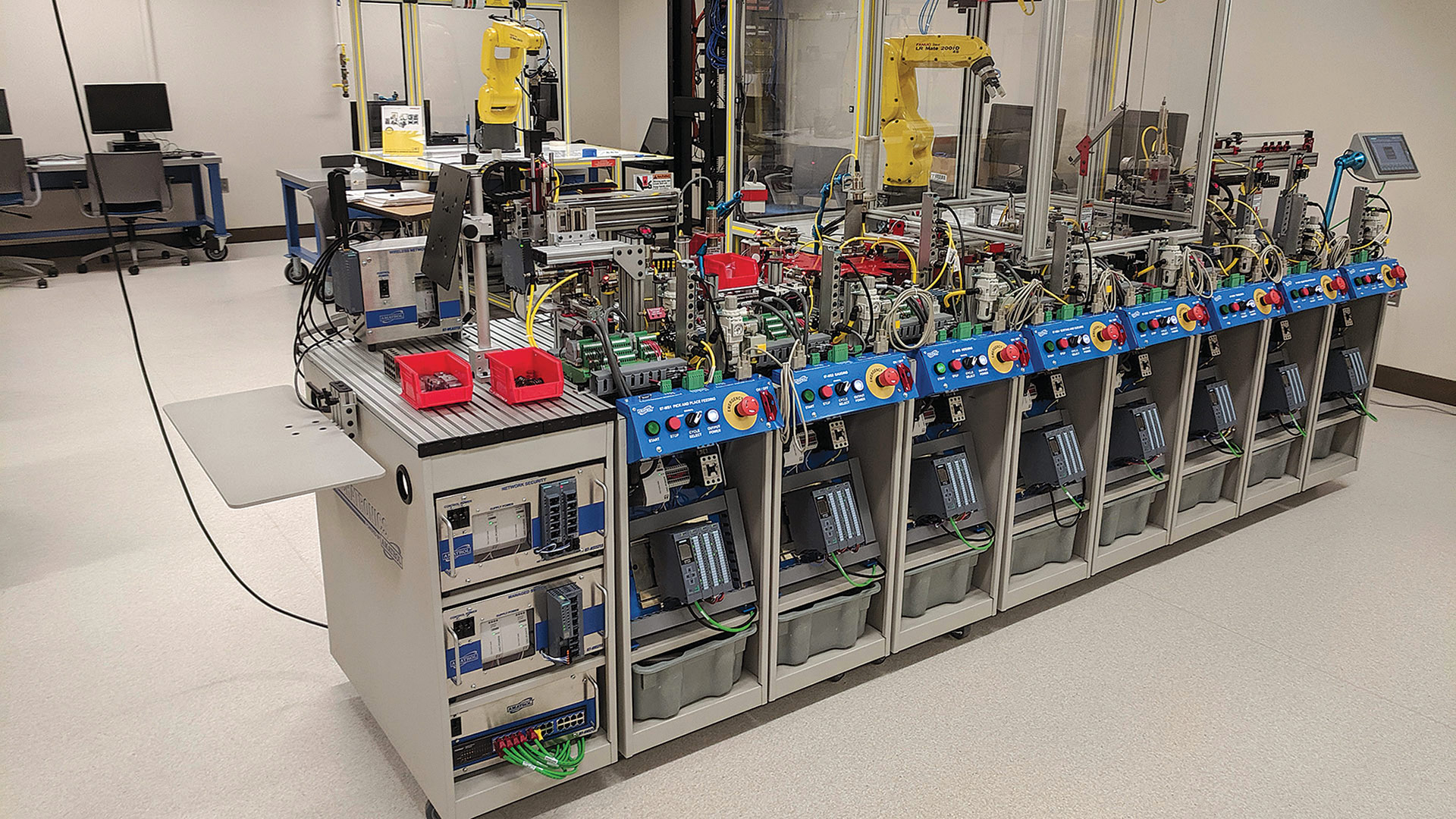
The Advanced Manufacturing Technology Center at ACC has 50,000 square feet of space devoted to robotics and mechatronics, machining, and welding.
“We’ve proven we can do it, and people have been successful,” she said, adding that the marketing message has been, “people wear their mask and social distance, and you don’t have to stop your education. We’re here for you, and jobs are waiting. As we head into summer and fall, people who want to go to school and get that education, they can.”
While student ages can range from 18 to 65, the average age at the Advanced Manufacturing Technology Center during the Great Recession, when many more people were looking to switch careers, was around 45. Today, it’s under 30, but no matter the age, the idea is to equip students with a strong foundation from which they can grow into any number of careers.
That foundation begins with a hands-on approach to learning the machinery and techniques, from 3D printers, lathes, and surface grinders to welding and robotics labs — a healthy mix of manual and CNC machines.
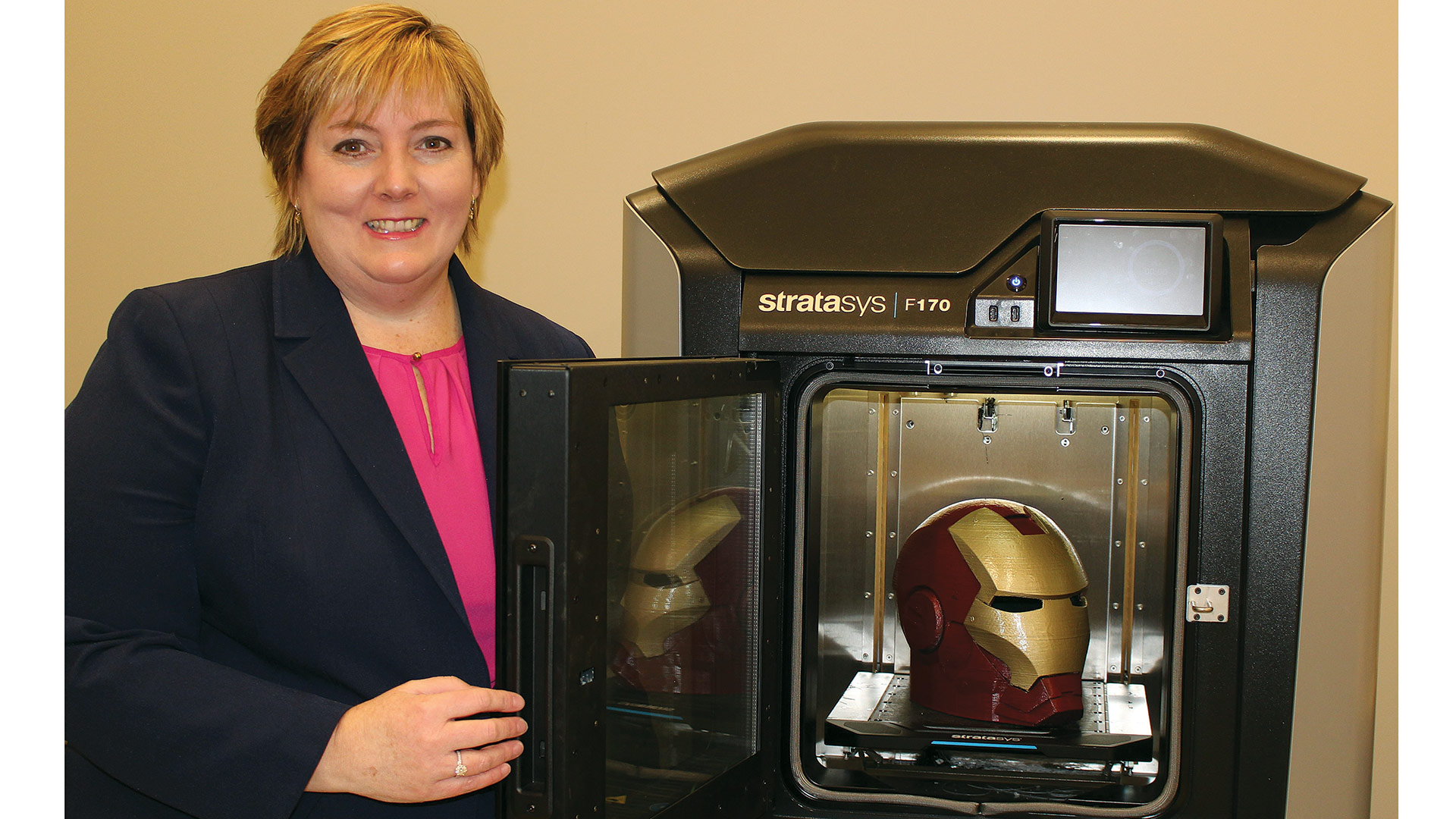
Mary Bidwell with one of the center’s 3-D printers.
Even in a healthy economy, the program still attracts a good number of mid-life career changers who see opportunities they don’t have in their current jobs. Meanwhile, high-school students can take classes at ACC to gain manufacturing credits before they enroll, and a second-chance program gives incarcerated individuals hands-on experience to secure employment once they’re eligible for parole.
It all adds up to a manufacturing resource, and an economic driver, that has attracted plenty of public funding from the state and from private foundations, such as the Gene Haas Foundation, which aims to build skills in the machining industry, and recently awarded the program a $15,000 grant to use for student scholarships for tuition and books.
Mind the Gaps
The program has also attracted attention of other kinds. The center was recently featured in the new book Workforce Education: A New Roadmap, written by MIT Professors William Bonvillian and Sanjay Sarma. The book explores the gaps and problems in the U.S. workforce education system, while also spotlighting how programs, including ACC’s Advanced Manufacturing Technology program, help to mitigate deficiencies across the country to build a stronger workforce.
“We spent time visiting and learning about apprenticeship programs, about new employer training programs, and visiting lots of community colleges,” Bonvillian said. “We found that our community colleges are our critical, not-so-secret weapon in educating our workforce, so we spent time at many.”
While the two were researching programs, they learned from an MIT friend, who grew up in Enfield, about Asnuntuck’s program, and Bonvillian set up a visit to the college.
“I was very impressed by the programs they presented in advanced-manufacturing skills that reached not only community-college students, but students from area high schools and incumbent workers at area companies,” he said. “In the book, we called this the ‘trifecta’ — Asnuntuck was using its flexible programs, its year-round schedule, and its new advanced-manufacturing center with its up-to-date equipment to reach three groups: workers and high-school students, as well as more traditional community-college students.”
That outreach is a constant challenge, Bidwell said, noting that, while outdated perceptions about today’s manufacturing floors — which many older people believe are dirty and unsafe — are changing, they do persist, and work needs to be done to get young people interested.
“I think it’s better than it was, but we’re not there 100%,” she said of the perception problem, adding that many companies market themselves online with videos taken on their clean, high-tech floors. “We are getting a younger population than we did years ago, but we’re still going around the state, trying to educate as much as we can. Guidance counselors are a big piece in high school. We need guidance counselors talking up manufacturing, and they have to understand it themselves. We’ve definitely made strides in that.”
Educating parents about what these careers really entail is part of the process as well, she added.
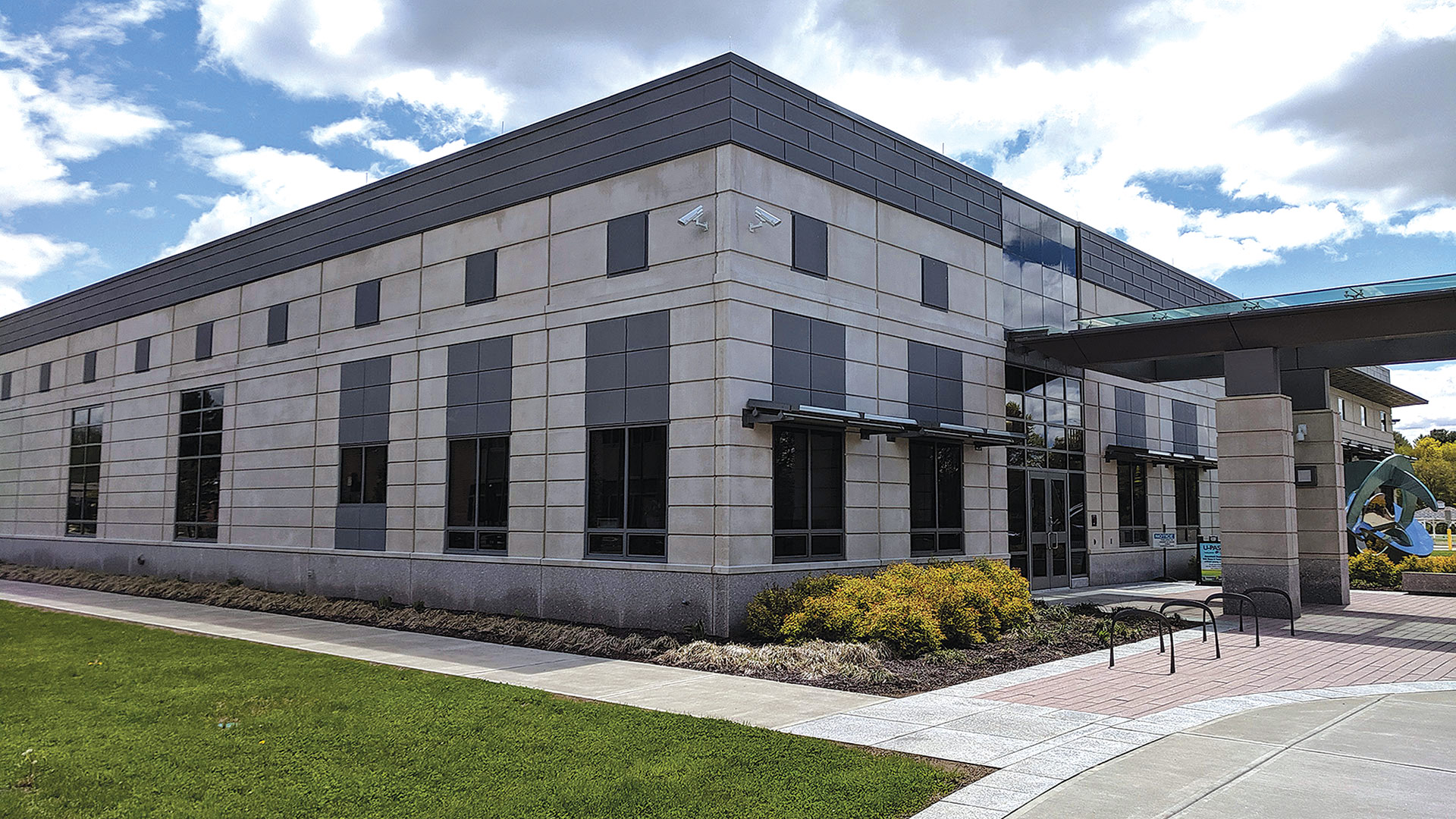
ACC has had students on campus part-time in a hybrid model since the fall.
“There’s a big push in high school now, but we want to get the middle schools, to get young people aware of manufacturing and create those career pathways. We’re looking at the inner cities, where there’s a lot of population, and the message is, ‘these are viable careers where you can sustain a family and have a good, livable wage.’”
Bonvillian believes Asnuntuck and similar programs can help satisfy the demand for educating a workforce that has been impacted this past year, and not just in manufacturing.
“The COVID crisis is hitting hard at some important sectors like retail and hospitality, and workers there may well need to find new work,” he said. “The U.S. needs to prioritize training more workers more quickly than the country’s current disconnected approach to workforce education allows.”
Opportunity Awaits
The connection that First Lady Jill Biden has to community colleges — and her advocacy for them — is important, too, in changing perceptions and helping people understand college and career opportunities they might not have considered, Bidwell said.
“We want more people to take advantage of all that community colleges have available. We see it in manufacturing, but also IT — there’s a big need for IT professionals, and for healthcare professionals.”
And she doesn’t expect any dip in opportunity for students — young or older — who want to explore the modern manufacturing world.
“There’s really a lot of energy in Connecticut, and in Western Mass., right over the border,” Bidwell said. “The plan is to get out of this [pandemic] and keep growing, and be ready for the demand when things turn around.”
Joseph Bednar can be reached at [email protected]



